Abstract
The effect of muscle length on susceptibility to fatigue has been examined in human ankle dorsiflexor muscles. The fatiguing procedure consisted of either indirect tetanic stimulation at 20 Hz or maximal voluntary contraction; each procedure lasted 90 s. The amplitude of the evoked muscle compound action potential (M-wave) increased during the first 30 s or so of the tetanic fatiguing procedure and then decreased. The torque developed by the dorsiflexor muscles declined throughout the period of tetanization. A significantly greater reduction in twitch and tetanic torque was found after the fatiguing procedure had been conducted at the optimum muscle length rather than with the muscle in a shortened position. Relaxation after tetanic stimulation was slower after fatigue had been induced at the optimum muscle length. It is concluded that muscle fatigue is related to the number of actin-myosin cross-bridge interactions and is unlikely to be accounted for solely on the basis of changes in the ionic composition of the transverse tubular fluid.
Full text
PDF
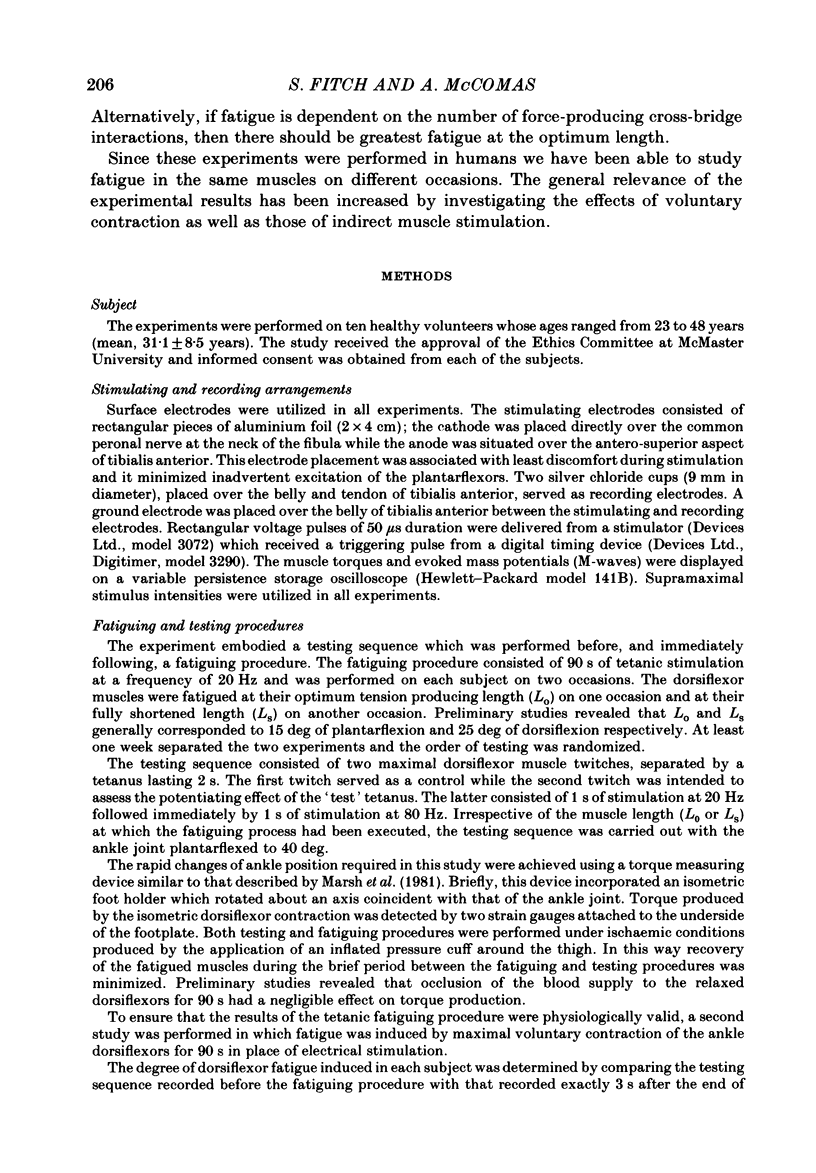
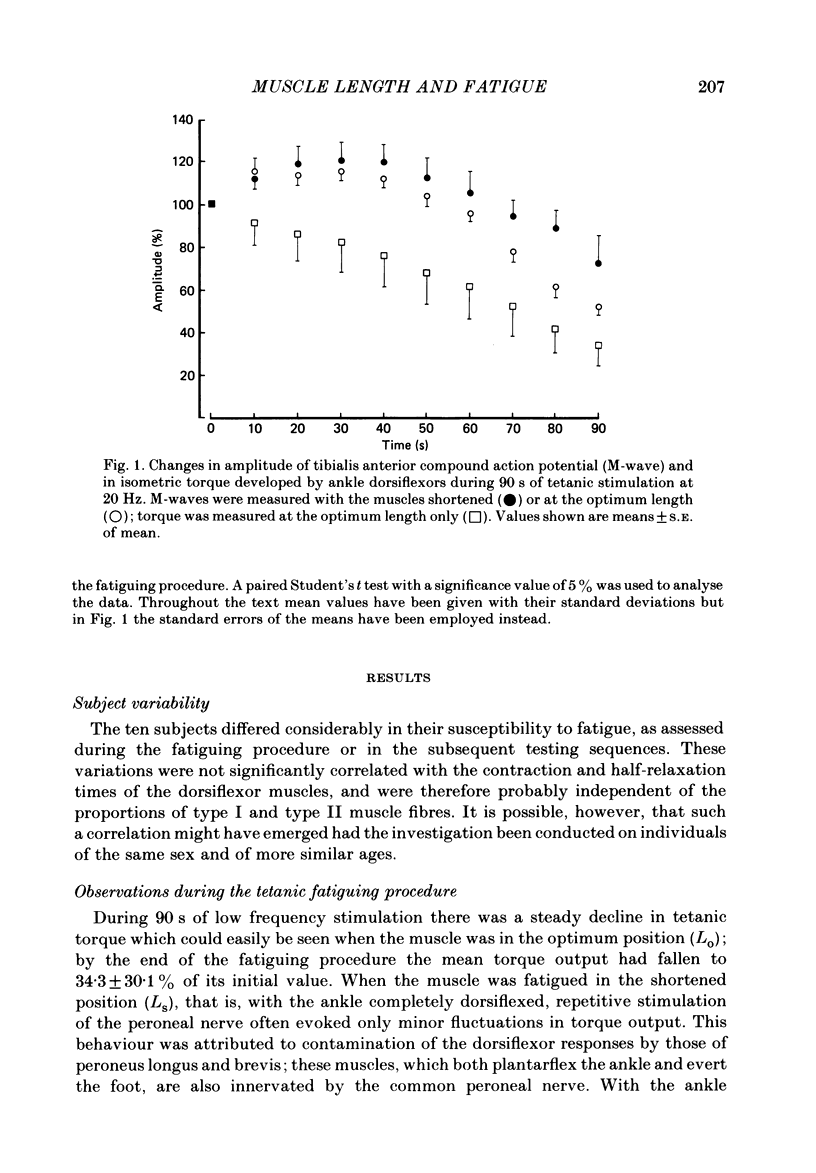
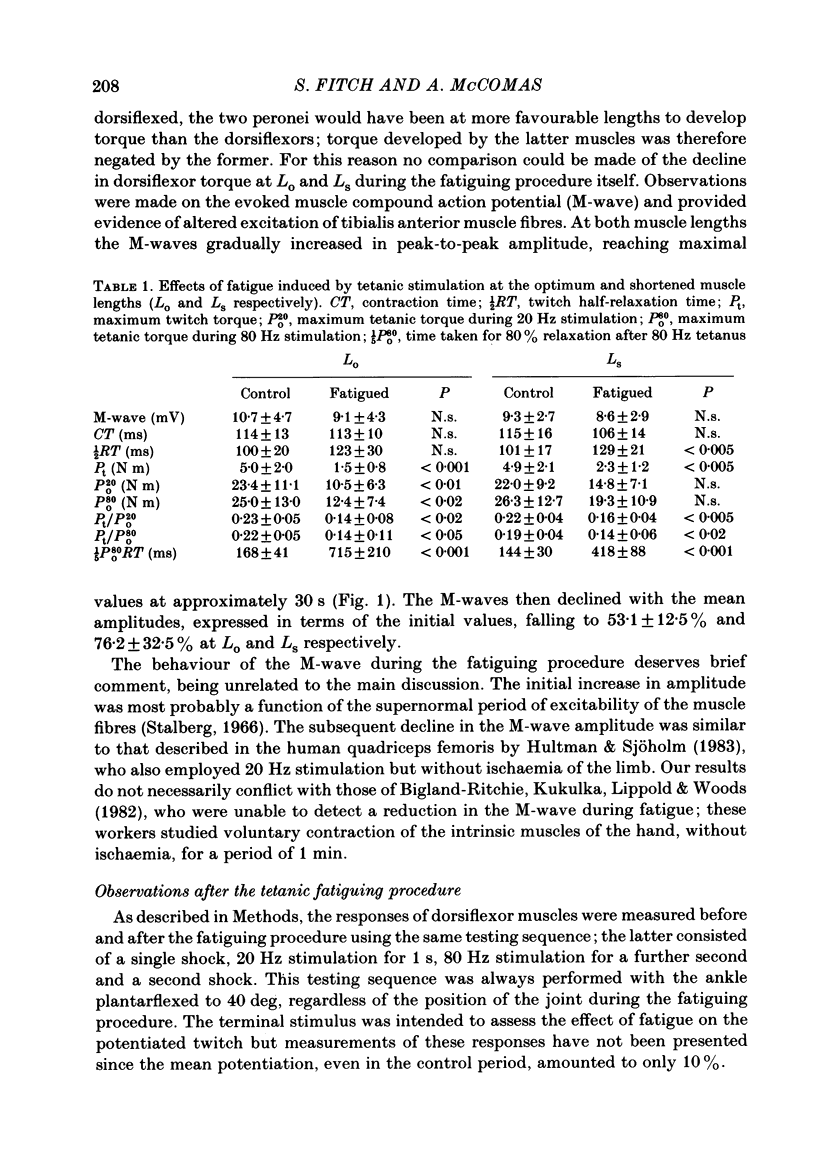
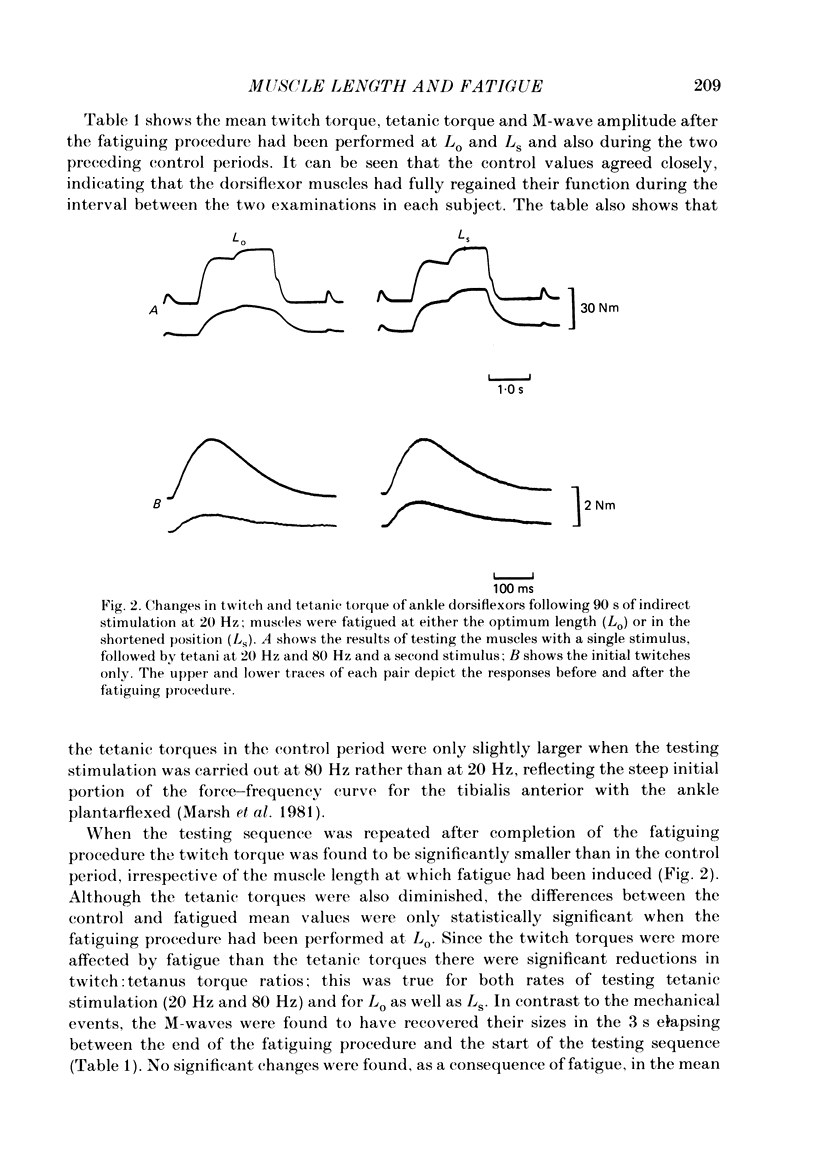
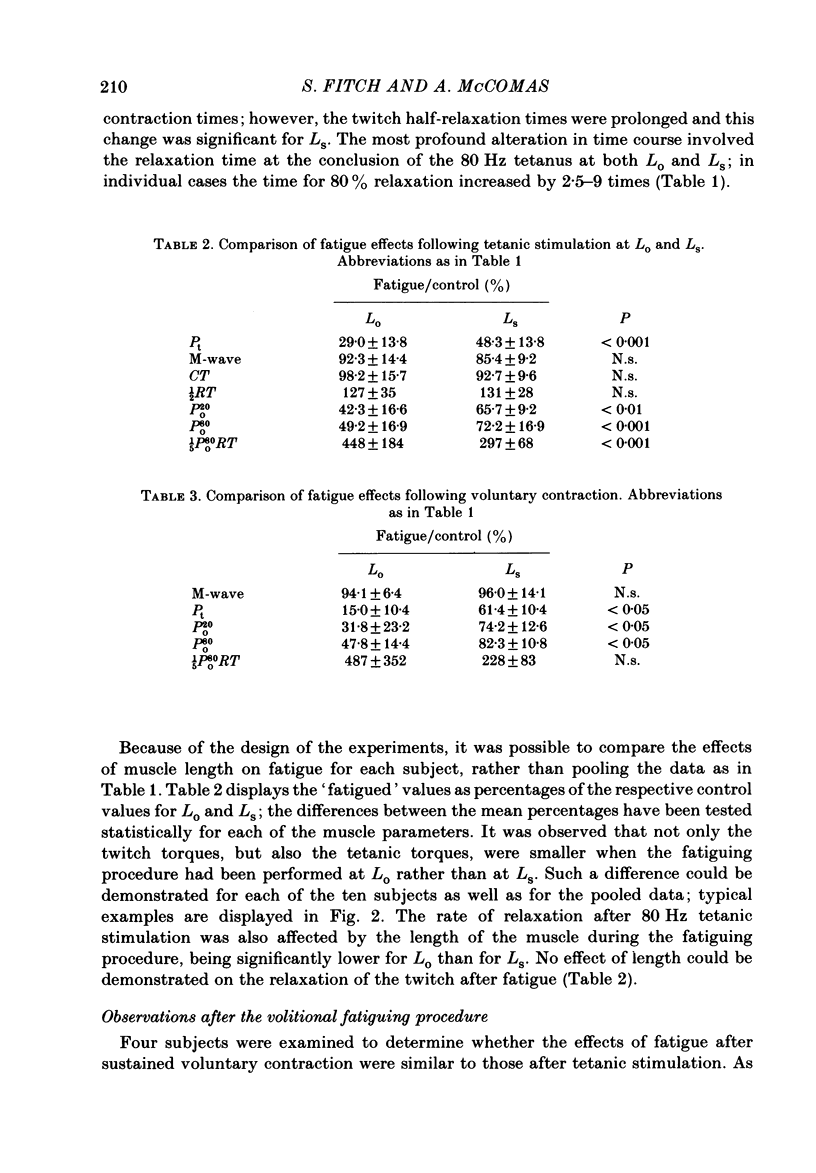
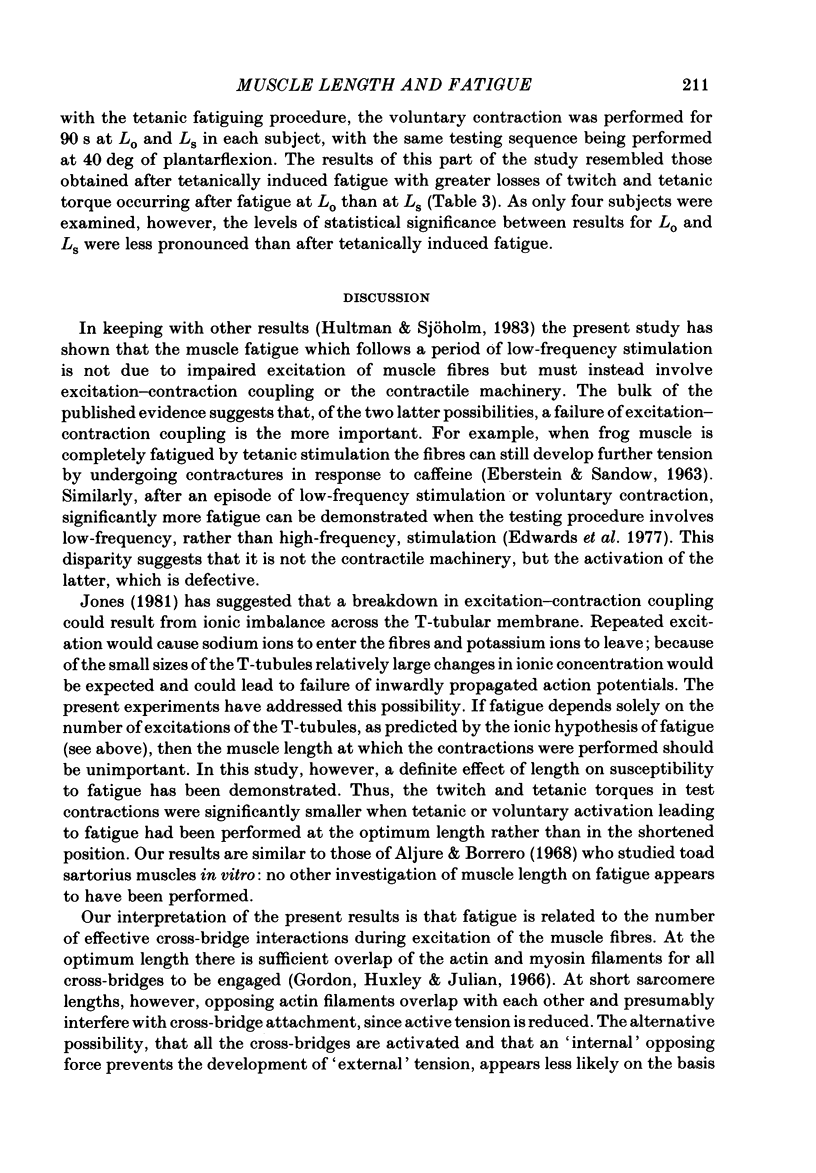
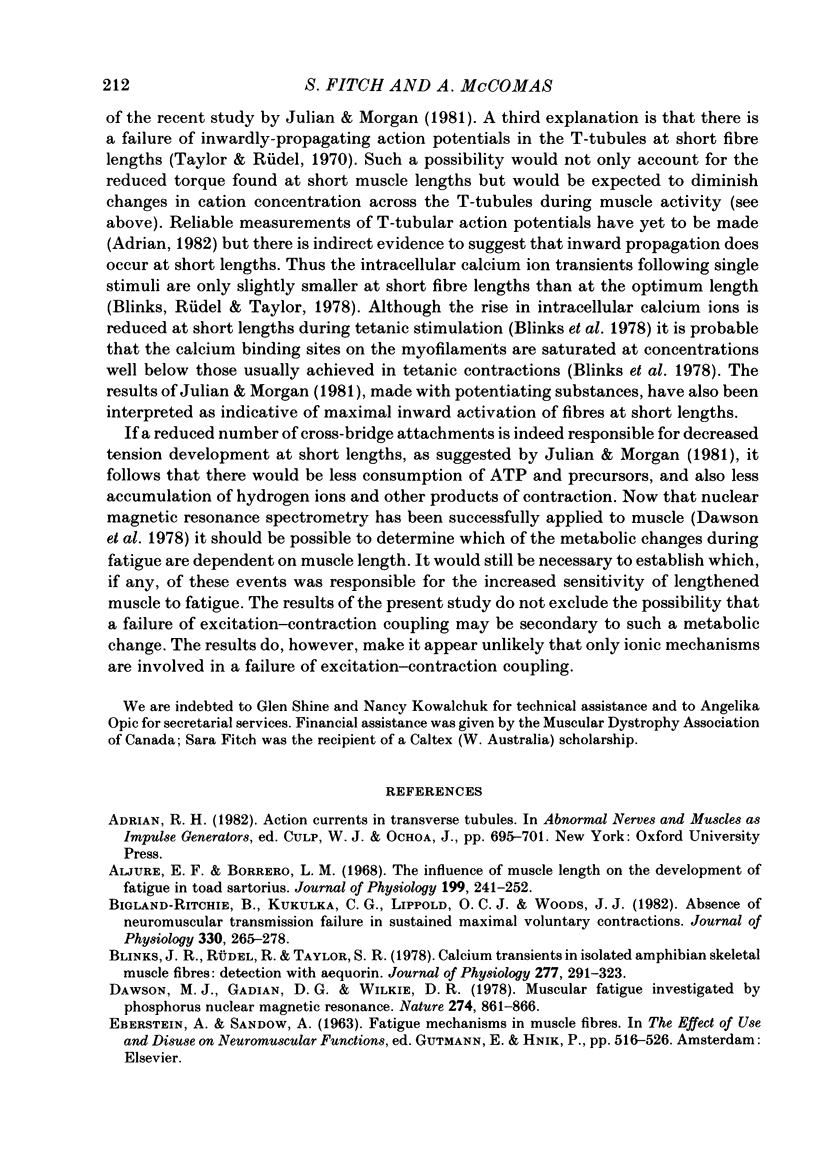
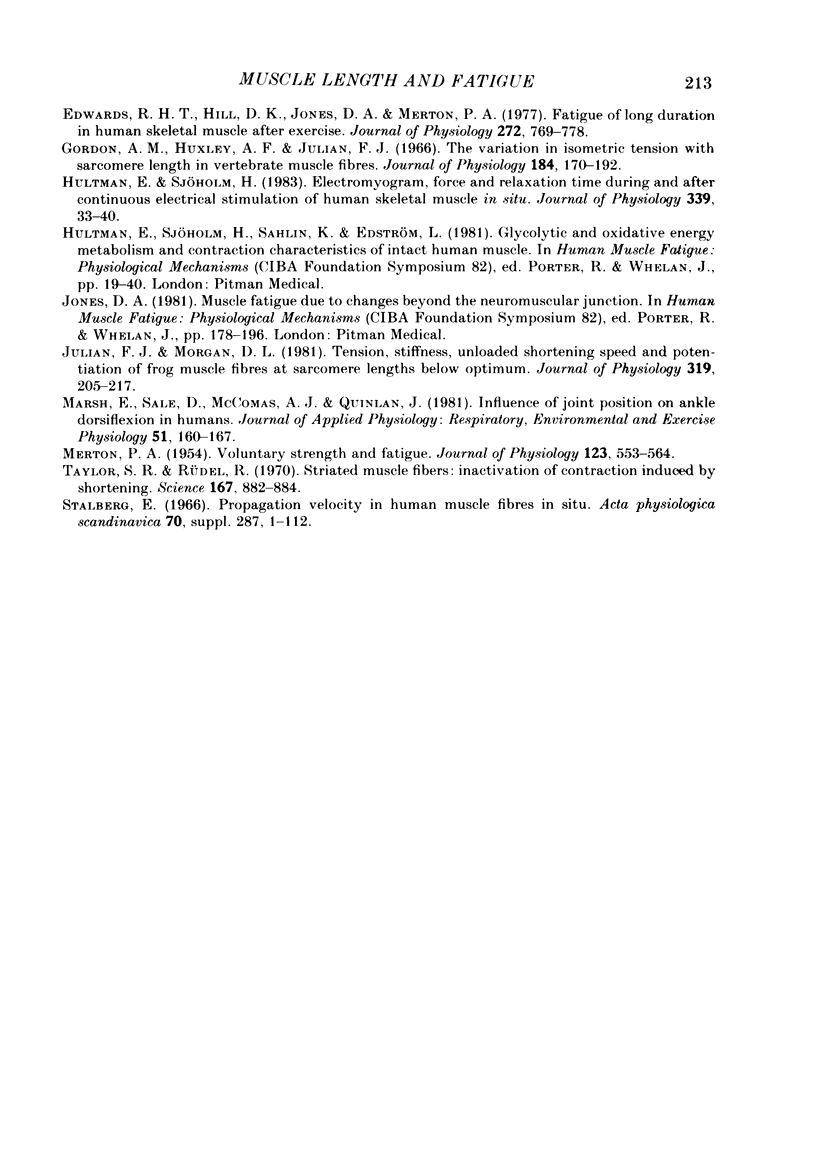
Selected References
These references are in PubMed. This may not be the complete list of references from this article.
- Aljure E. F., Borrero L. M. The influence of muscle length on the development of fatigue in toad sartorus. J Physiol. 1968 Dec;199(2):241–252. doi: 10.1113/jphysiol.1968.sp008651. [DOI] [PMC free article] [PubMed] [Google Scholar]
- Bigland-Ritchie B., Kukulka C. G., Lippold O. C., Woods J. J. The absence of neuromuscular transmission failure in sustained maximal voluntary contractions. J Physiol. 1982 Sep;330:265–278. doi: 10.1113/jphysiol.1982.sp014340. [DOI] [PMC free article] [PubMed] [Google Scholar]
- Blinks J. R., Rüdel R., Taylor S. R. Calcium transients in isolated amphibian skeletal muscle fibres: detection with aequorin. J Physiol. 1978 Apr;277:291–323. doi: 10.1113/jphysiol.1978.sp012273. [DOI] [PMC free article] [PubMed] [Google Scholar]
- Dawson M. J., Gadian D. G., Wilkie D. R. Muscular fatigue investigated by phosphorus nuclear magnetic resonance. Nature. 1978 Aug 31;274(5674):861–866. doi: 10.1038/274861a0. [DOI] [PubMed] [Google Scholar]
- Edwards R. H., Hill D. K., Jones D. A., Merton P. A. Fatigue of long duration in human skeletal muscle after exercise. J Physiol. 1977 Nov;272(3):769–778. doi: 10.1113/jphysiol.1977.sp012072. [DOI] [PMC free article] [PubMed] [Google Scholar]
- Gordon A. M., Huxley A. F., Julian F. J. The variation in isometric tension with sarcomere length in vertebrate muscle fibres. J Physiol. 1966 May;184(1):170–192. doi: 10.1113/jphysiol.1966.sp007909. [DOI] [PMC free article] [PubMed] [Google Scholar]
- Hultman E., Sjöholm H. Electromyogram, force and relaxation time during and after continuous electrical stimulation of human skeletal muscle in situ. J Physiol. 1983 Jun;339:33–40. doi: 10.1113/jphysiol.1983.sp014700. [DOI] [PMC free article] [PubMed] [Google Scholar]
- Hultman E., Sjöholm H., Sahlin K., Edström L. Glycolytic and oxidative energy metabolism and contraction characteristics of intact human muscle. Ciba Found Symp. 1981;82:19–40. [PubMed] [Google Scholar]
- Jones D. A. Muscle fatigue due to changes beyond the neuromuscular junction. Ciba Found Symp. 1981;82:178–196. doi: 10.1002/9780470715420.ch11. [DOI] [PubMed] [Google Scholar]
- Julian F. J., Morgan D. L. Tension, stiffness, unloaded shortening speed and potentiation of frog muscle fibres at sarcomere lengths below optimum. J Physiol. 1981;319:205–217. doi: 10.1113/jphysiol.1981.sp013902. [DOI] [PMC free article] [PubMed] [Google Scholar]
- MERTON P. A. Voluntary strength and fatigue. J Physiol. 1954 Mar 29;123(3):553–564. doi: 10.1113/jphysiol.1954.sp005070. [DOI] [PMC free article] [PubMed] [Google Scholar]
- Marsh E., Sale D., McComas A. J., Quinlan J. Influence of joint position on ankle dorsiflexion in humans. J Appl Physiol Respir Environ Exerc Physiol. 1981 Jul;51(1):160–167. doi: 10.1152/jappl.1981.51.1.160. [DOI] [PubMed] [Google Scholar]
- Stalberg E. Propagation velocity in human muscle fibers in situ. Acta Physiol Scand Suppl. 1966;287:1–112. [PubMed] [Google Scholar]
- Taylor S. R., Rüdel R. Striated muscle fibers: inactivation of contraction induced by shortening. Science. 1970 Feb 6;167(3919):882–884. doi: 10.1126/science.167.3919.882. [DOI] [PubMed] [Google Scholar]


